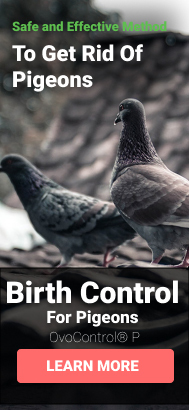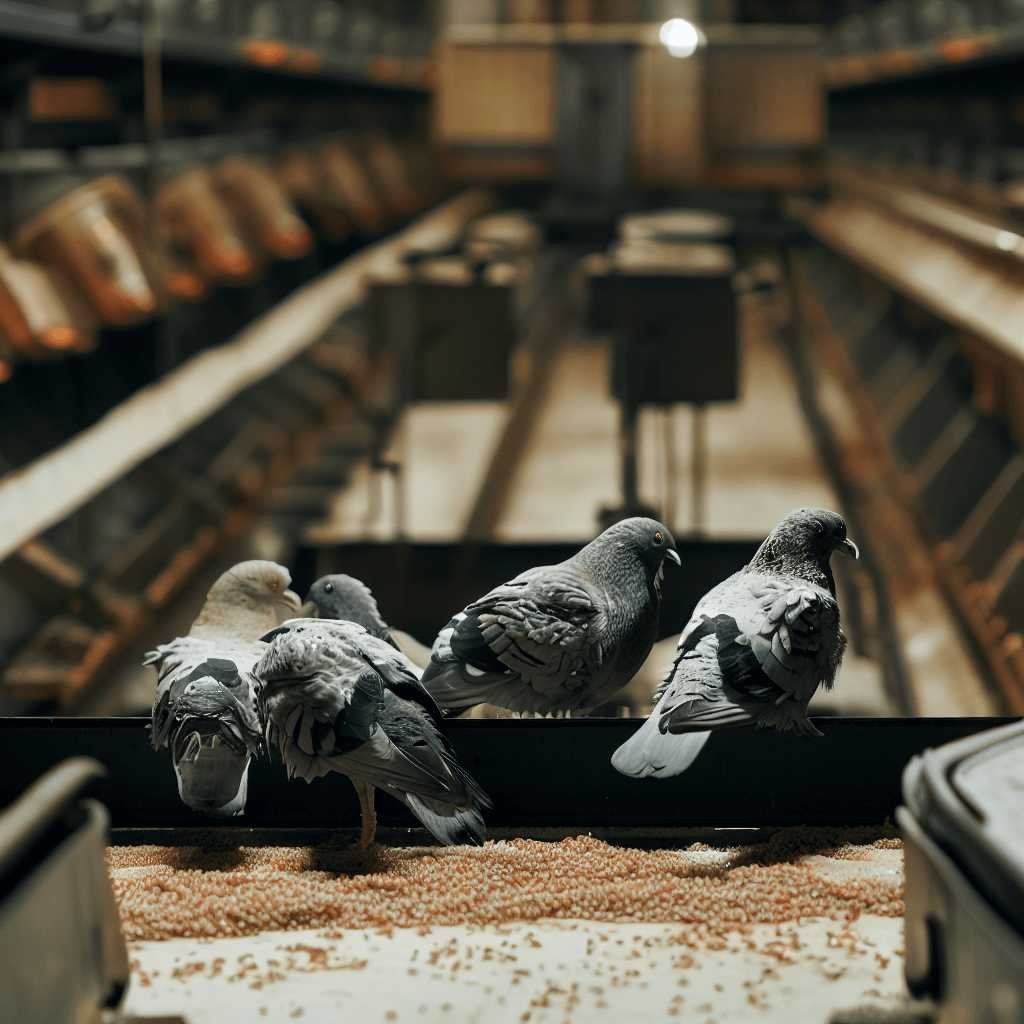Food Processing Bird Control: Proven Methods Uncovered
Written by Erick Wolf
Food processing bird control is critical as these pests tend to nest or roost in rafters above storage sites and food production lines when entering through loading docks and open doors. Unfortunately, birds can contaminate stored products and food production as their droppings call from lofty areas, such as rafters.
Active bird droppings are one issue, but even dried bird droppings are cause for bird control for food processing as well. Working their way into ventilation systems, bird dropping spores can contaminate food, packaging, and handling surfaces throughout food processing.
In this article, we’ll take an in-depth look at bird control for food processing, including discussing why it’s crucial and identifying some of the most popular food processing bird control methods today.
Why is Bird Control in Food Processing Important?
Food processing bird control is crucial to production sites worldwide as birds have plagued numerous facilities since the beginning of time.
Image
Because birds expel droppings uncontrollably, they are notorious for damaging reputations, especially in food processing. It’s bad for businesses to have birds around your food processing facility, which is why bird control is a must.
FDA Database
As a result of the Food Safety Modernization Act (FSMA), the FDA now has a searchable recall database. The information provided on this database helps provide consumers with transparency on any food safety issues they should be concerned with.
If your business appears in the FDA database, you can anticipate significant drop-offs in profit generation now and in the future.
Costs
It comes as no surprise that birds are capable of causing damage to products in food processing facilities. In addition to these costs, it’s also essential to consider the costs associated with fixing structural damages caused by bird droppings.
Other costs to be concerned about include those that come along with shutdowns of facilities due to unsanitary conditions.
Health Risks
As a producer of food products, promoting safety across your facilities is crucial. That’s why food processing bird control is a pivotal element in increasing safety amongst:
Food products
Equipment
Facilities
Working conditions
In addition to protecting products, the safety of consumers and workers alike also includes minimizing the spread of diseases. It’s no secret that the fecal matter of birds can spread disease. The last thing a food production facility needs is to deal with the spread of disease through their products or premises due to lacking bird control methods.
Most Popular Food Processing Bird Control Methods
Here are the most popular food processing bird control methods available today.
Birth Control
When it comes to bird control for food processing, birth control is the most humane option available. Bird birth control acts limit the flocks' capability to multiply at rapid, uncontrollable rates rather than attacking the live population.
Bird Netting
Bird netting is one of the oldest forms of food processing bird control. This form of bird control is a mesh that creates a physical barrier to prevent birds from landing or nesting within areas of your facility.
Although bird netting can be generally effective around the exterior of food processing plants, it poses the threat of trapping birds inside once they’ve found a way in.
Bird Deterrents
To scare birds away from your food processing facility, you may want to consider visual bird deterrents. Some examples of visual deterrents commonly used in food process bird control include:
Reflected light sources
Sonic and ultrasonic emitters
Trained raptors
Effigies
Propane cannons
While visual deterrents can be effective, they require additional bird control for food processing solutions.
Bird Spikes
Bird spikes are a physical bird control method to help keep birds away from specific raised areas around facilities. Bird spikes come in various splay widths, ranging from one to ten inches.
Unfortunately, bird spikes only work in the areas they are placed, which means that birds are likely to find other locations to roost and nest, as it is impossible to cover your whole facility in spikes.
Why is Ovocontrol the Most Effective and Humane Bird Control Method for Food Processing?
When it comes to finding effective food processing bird control methods, you’ll often find that it requires the use of multiple solutions. Especially in more extensive facilities, you will have to get creative while remembering that prices add up quickly. Thankfully, OvoControl is the new solution to bird control for food processing.
How OvoControl Works
OvoControl is a kibble-type bird birth control. Since it looks and tastes like food, birds consume the product, ultimately limiting their reproduction capabilities. Without causing harm to the birds, OvoContorl limits the ability of a pigeon’s egg to develop fully.
The active ingredient, nicarbazin, was discovered as birth control by accident. Before this use, the product was used to treat enteric diseases in chickens for over 65 years. Researchers quickly found nicarbazin interfered with the egg’s membrane needed in development, referred to as the vitelline layer. As a result, OvoControl integrated nicarbazin to serve as a sterilizer for birds.
Final Thoughts
While there are a few different options for food processing bird control, they often require multiple solutions and can still not be entirely effective at minimizing populations. OvoControl remains one of the most humane and practical solutions to bird control for food production today. Its multiple delivery options make it customizable to any bird population size, while its non-toxic active ingredient ensures humane treatment of the birds.





